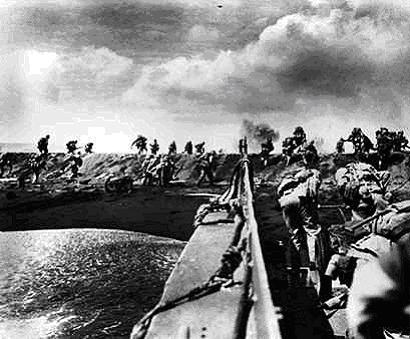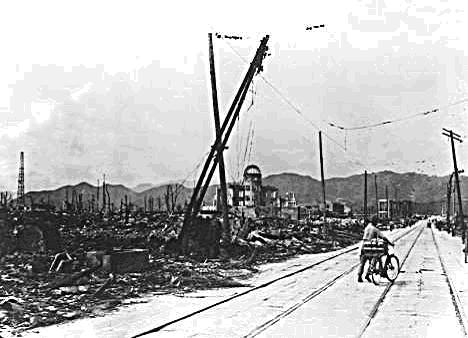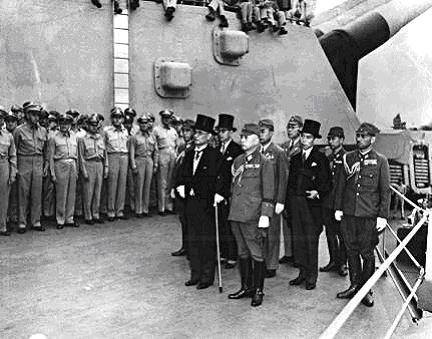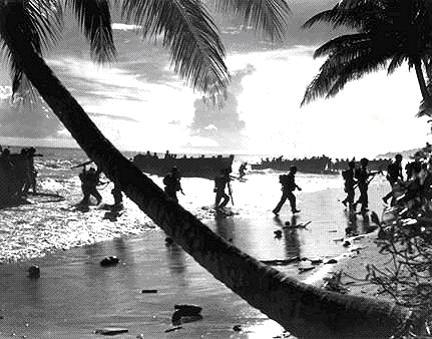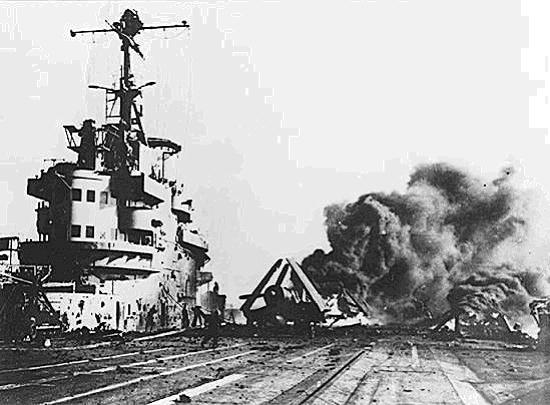
Japanese Kamikaze Attack
Kamikaze, which in Japanese means “divine wind,” were suicide squadrons organized by the Japanese air force in the last months of World War II. Pilots flew their aircraft, loaded with explosives, directly into U.S. naval vessels. Kamikaze pilots, sacrificing their lives in a last-ditch effort to stop the American advance, sank about 40 U.S. ships.